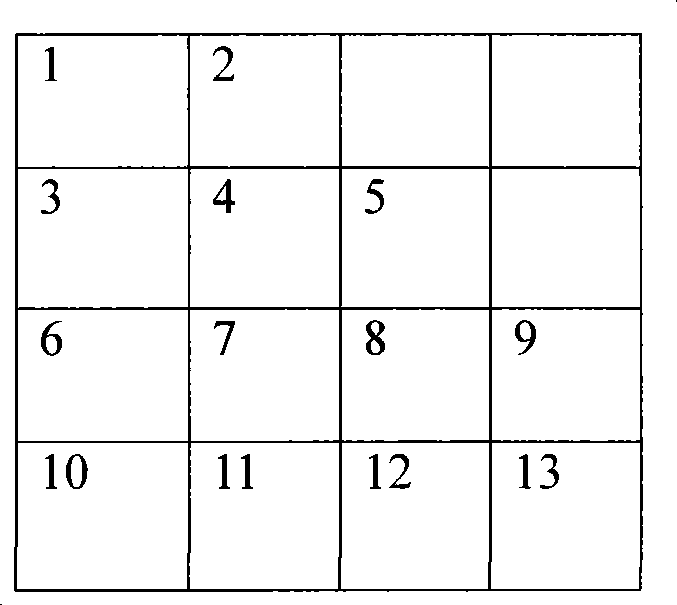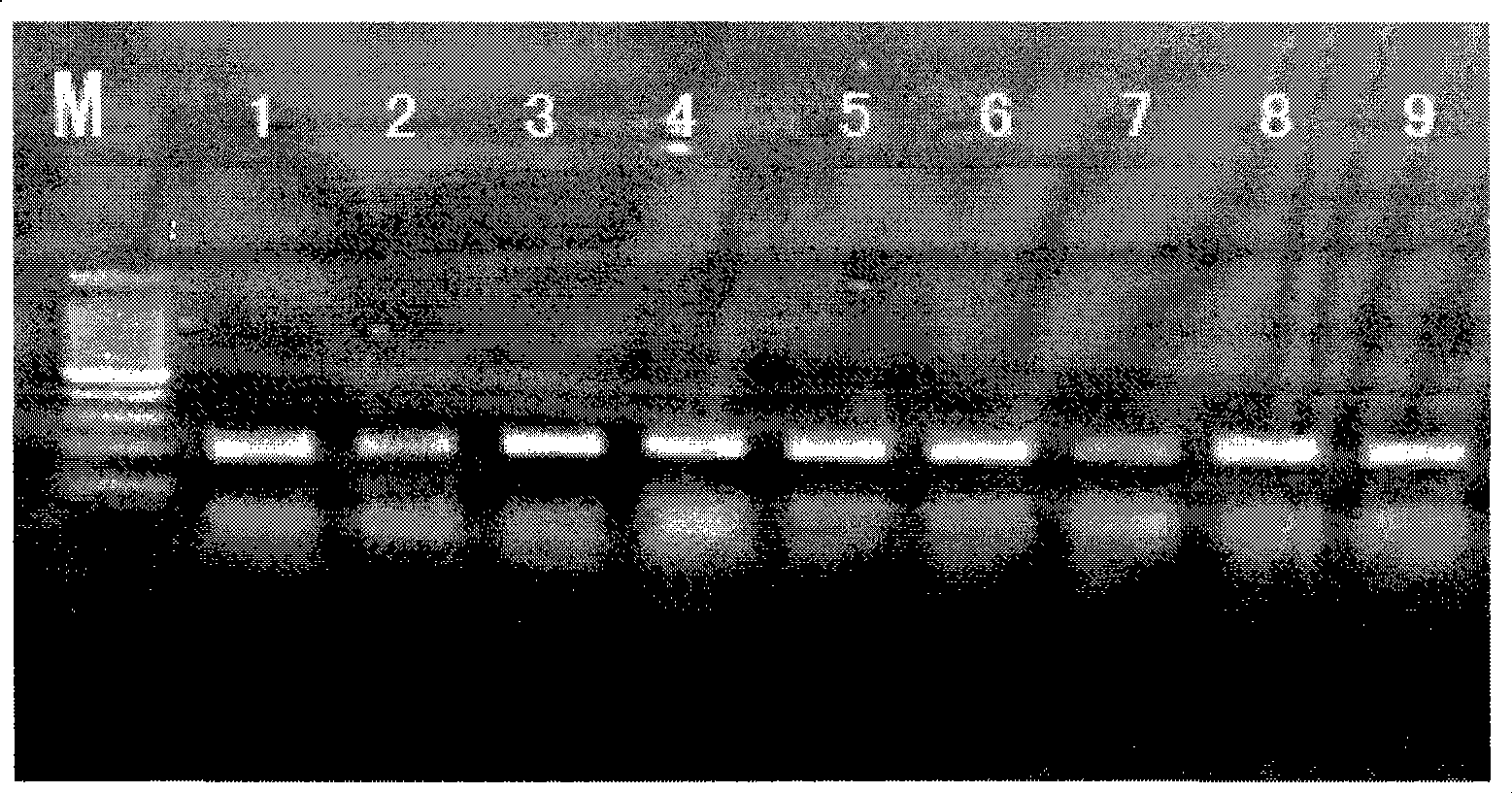HCV gene typing detecting reagent kit
A hepatitis C virus and kit technology, applied in the direction of biological testing, material inspection products, microbial measurement/inspection, etc., can solve the problems of long detection time, cumbersome operation, low sensitivity, etc.
- Summary
- Abstract
- Description
- Claims
- Application Information
AI Technical Summary
Problems solved by technology
Method used
Image
Examples
Embodiment 1
[0070] Embodiment 1: Preparation of sample target nucleic acid
[0071] Use a disposable sterile syringe to extract 2 ml of venous blood from the subject, inject it into a sterile dry glass tube, and place it at room temperature (22-25°C) for 30-60 minutes or centrifuge to separate out the serum. Aspirate 100 μl of the upper serum, transfer it to a 1.5ml sterilized centrifuge tube, add 20 μl of well-mixed RNA extraction solution A, then add 400 μl of RNA extraction solution B and mix well. Place at room temperature for 5 minutes, centrifuge at 6000 rpm for 1 minute, carefully suck off the supernatant, and wash the precipitate twice with 75% pre-cooled ethanol (prepared with DEPC water). Dry the pellet at 65°C for 10 minutes. Add 18 μl of Hepatitis C Reverse Transcription System to the precipitation tube, and the next step of reverse transcription reaction can be carried out.
Embodiment 2
[0072] Example 2: Reverse transcription of RNA into cDNA
[0073] Take a 1.5mL centrifuge tube without RNase, take 19μL×(N+1) reverse transcription reaction solution, add 1μL×(N+1) reverse transcriptase, mix well to prepare a reverse transcription system, and dispense to N( N=Number of samples to be detected+2) In 0.2mL centrifuge tubes without RNase-free blanks, add 5 μL of the prepared RNA template to each centrifuge tube packed with the reverse transcription system, and centrifuge briefly (3 seconds), Put each reaction tube into the PCR instrument. The reverse transcription (RT) reaction was performed under the following conditions: constant temperature at 40°C for 60 minutes, then inactivation at 95°C for 3 minutes, and then constant temperature at 4°C.
Embodiment 3
[0074] Embodiment 3: the PCR amplification of target nucleic acid
[0075] Take several tubes of single-tube PCR reaction solution for one person, directly add 3 μl of the reverse-transcribed cNDA template, mix well, and centrifuge briefly (3 seconds), then put each reaction tube into the PCR machine. Amplify according to the following conditions: pre-denaturation at 93°C for 6 minutes, followed by 10 cycles of 93°C for 45 seconds, 57°C for 45 seconds, 72°C for 45 seconds, 93°C for 30 seconds, 55°C for 40 seconds, and 72°C for 45 seconds. Add 30 cycles, a total of 40 cycles; finally, keep warm at 72°C for 7 minutes. The amplified products were detected by 2% agarose gel electrophoresis (see attached figure 2 ).
PUM
 Login to View More
Login to View More Abstract
Description
Claims
Application Information
 Login to View More
Login to View More - R&D
- Intellectual Property
- Life Sciences
- Materials
- Tech Scout
- Unparalleled Data Quality
- Higher Quality Content
- 60% Fewer Hallucinations
Browse by: Latest US Patents, China's latest patents, Technical Efficacy Thesaurus, Application Domain, Technology Topic, Popular Technical Reports.
© 2025 PatSnap. All rights reserved.Legal|Privacy policy|Modern Slavery Act Transparency Statement|Sitemap|About US| Contact US: help@patsnap.com



